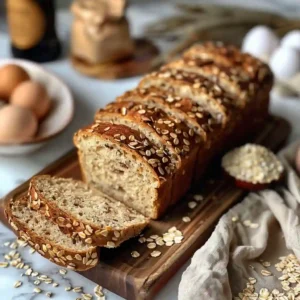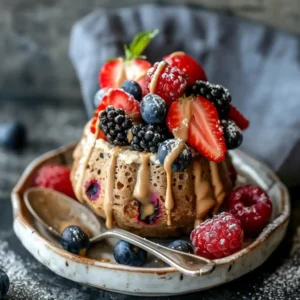Low Histamine Salad Dressings to Support Hormone Balance (No Vinegar No Dairy) weren’t even on my radar—until my wife hit a wall with her hormones. She loved her daily salads, loaded with “healthy” store-bought dressings. But the bloating, brain fog, and mood swings wouldn’t go away.
After months of trial and error, we realized her go-to dressings were packed with histamine triggers like vinegar and dairy—two ingredients that were silently working against her hormones. So I got to work in the kitchen, determined to create clean, flavorful dressings that didn’t fight her body. No vinegar. No dairy. Just real, nourishing ingredients that tasted just as good.
Now? Her symptoms are more stable, her energy is back—and she actually prefers these homemade dressings. I’ve even caught her making extra to take to work.
In this guide, I’m sharing the exact low histamine salad dressings we use in our home to support hormone balance naturally. Plus, if you’re looking for sweet options too, don’t miss these Low Histamine Desserts That Support Hormone Balance—my family’s other favorite!
Let’s dive in. Because food should heal—not hurt.
Table of Contents
Understanding Low Histamine Salad Dressings and Hormone Balance
What Is Histamine and Why It Matters
From my own journey with food sensitivities, I’ve learned that histamine isn’t just about allergies—it’s a naturally occurring compound involved in digestion, immunity, and even brain function. But when histamine builds up—due to stress, gut issues, or the foods we eat—it can cause a cascade of symptoms: headaches, fatigue, bloating, skin reactions, and even hormone imbalances.
Normally, your body clears out histamine with enzymes like DAO (diamine oxidase). But when those enzymes are underactive, or overloaded, histamine lingers. That’s when I started noticing that even small things—like vinegar-based dressings or dairy-rich condiments—could trigger discomfort, fatigue, and mood changes.
How Histamine Impacts Hormone Levels
What really surprised me? Histamine doesn’t just affect digestion—it interacts with key hormones like estrogen and cortisol. Estrogen actually boosts histamine release, and histamine can raise estrogen levels. It’s a feedback loop that can worsen PMS, mood swings, and irregular cycles—especially in women. For men, the spike in cortisol and stress hormones can mess with energy and focus.
That’s when I realized: even my “healthy” salad habits weren’t supporting my body if the dressings were full of vinegar, dairy, or other histamine-rich ingredients. Swapping in low histamine salad dressings wasn’t just a gut-friendly move—it became part of our hormone-balancing lifestyle.
Why Salad Dressings Are Sneaky Histamine Triggers
Like most people, I assumed salad dressings were harmless. But it turns out, most store-bought options are packed with high histamine ingredients: vinegar, aged cheese, lemon juice, soy sauce, mustard, and sneaky preservatives.
Even the organic, “clean-label” ones I used to buy often hid apple cider vinegar or citrus—two common triggers that had been flying under my radar.
That’s why I started creating my own no vinegar, no dairy dressings—simple, nourishing alternatives that didn’t disrupt my digestion or hormones. And the bonus? My wife (who’s also sensitive to hormone swings) loves them. Just like these Low Histamine Desserts That Support Hormone Balance, these dressings have become staples in our anti-inflammatory kitchen.
Ingredients to Avoid in Low Histamine Salad Dressings
Sneaky High-Histamine Triggers Hiding in “Healthy” Dressings
When I started tracking my histamine reactions more closely, I realized something surprising: many so-called “healthy” salad dressings were actually behind my bloating, brain fog, and hormone imbalances. Even the organic, sugar-free, or keto-friendly versions often include ingredients that wreak havoc on sensitive systems.
Here’s what I found hiding in most commercial dressings—not exactly friendly for a low histamine salad dressing lifestyle:
- Vinegar (apple cider, balsamic, white): One of the worst histamine offenders, yet it’s in nearly every bottle
- Mustard: Almost always contains vinegar and preservatives
- Soy sauce or tamari: Fermented = high histamine
- Dairy products: Aged cheese, sour cream, or buttermilk in creamy dressings like ranch or Caesar
- Citrus juices: Lemon and lime may sound refreshing, but they can spike histamine
- Artificial preservatives and gums: Bad news for both gut and hormone health
Even the “clean” dressings in fancy packaging? Most still rely on vinegar or citrus for tang. That’s when I knew I had to start making my own low histamine salad dressings—and honestly, I haven’t looked back since.
Why “No Vinegar” and “No Dairy” Are Non-Negotiables for Hormone Health
Once I completely cut out vinegar and dairy from my salad dressings, my body responded almost immediately. Fewer headaches. Less inflammation. Better digestion. And perhaps most important—steadier hormone levels.
Here’s why ditching these ingredients is a game-changer when it comes to creating low histamine salad dressings that support your endocrine system:
- No vinegar = lower histamine load, fewer reactions
- No dairy = less gut irritation and inflammatory response
- No citrus = reduced histamine release and clearer skin
- No fermentation or preservatives = easier on your liver and hormones
If you’re serious about supporting hormone balance while managing histamine intolerance, these are the top triggers to avoid in your dressings—and in your broader low histamine diet.
💡 Want to go even deeper? Try our Low Histamine Desserts That Support Hormone Balance [internal link suggestion] to round out your meals with clean, satisfying sweet options that follow the same gut- and hormone-safe principles.
Best Ingredients for Making Low Histamine Salad Dressings
Clean Ingredients That Taste Great and Support Hormone Health
Once I left the vinegar aisle behind, I had to get creative. But honestly? I found that low histamine salad dressings without vinegar or dairy can be just as flavorful—if not better.
Now, I keep these pantry staples on hand to build my homemade dressings from scratch:
- Cold-pressed olive oil – Full of antioxidants and hormone-supporting fats
- Coconut yogurt (unsweetened) – Creamy, dairy-free, and low in histamine
- Avocado – Adds body, richness, and clean fats that keep hormones in balance
- Fresh herbs (basil, parsley, cilantro) – Detox-friendly and flavorful
- Cucumber juice – Light, cooling, and a favorite in my low histamine salad dressings
- Pear juice – Slightly sweet and tangy, without the triggers of citrus
- Ground chia or flaxseed – Natural thickeners with fiber to support blood sugar
- Blended zucchini – Creamy and mild, great for consistency and volume
- Fresh ginger or turmeric – Anti-inflammatory, flavorful, and hormone-safe
With these clean, gut-friendly options, I create low histamine salad dressings that actually support how I feel—energized, clear-headed, and not bogged down by inflammation.
The Best Vinegar Alternatives for Low Histamine Salad Dressings
Finding that acidic “kick” without vinegar took some experimenting. But I eventually found delicious swaps that recreate the tang—without the histamine backlash.
Here are my go-to vinegar-free, low histamine dressing hacks:
- Citric acid (food-grade) – A sharp edge without the citrus fruit
- Green apple juice – Naturally tart and histamine-friendly
- Cucumber water – Mildly acidic, refreshing, and great for hydration
- Sweet potato puree + lemon balm tea – A surprisingly smooth, tangy combo
When paired with olive oil, herbs, or coconut yogurt, these ingredients help me make low histamine salad dressings that are creamy, zesty, and completely hormone-safe.
Easy Homemade Low Histamine Salad Dressing Recipes (No Vinegar, No Dairy)
When I set out to make low histamine salad dressings that support hormone balance, I had two goals: they needed to be easy and actually taste good. After tons of testing, these three no-vinegar, no-dairy recipes became my go-tos—and even my wife (who used to love store-bought dressings) gave them a thumbs up.
Each recipe uses clean, low histamine ingredients that won’t spike inflammation or trigger hormonal chaos. And yes, they’re totally free from vinegar, dairy, and citrus.
🥑 Creamy Avocado Herb – A Low Histamine Salad Dressing Favorite
Low Histamine | No Dairy | No Vinegar
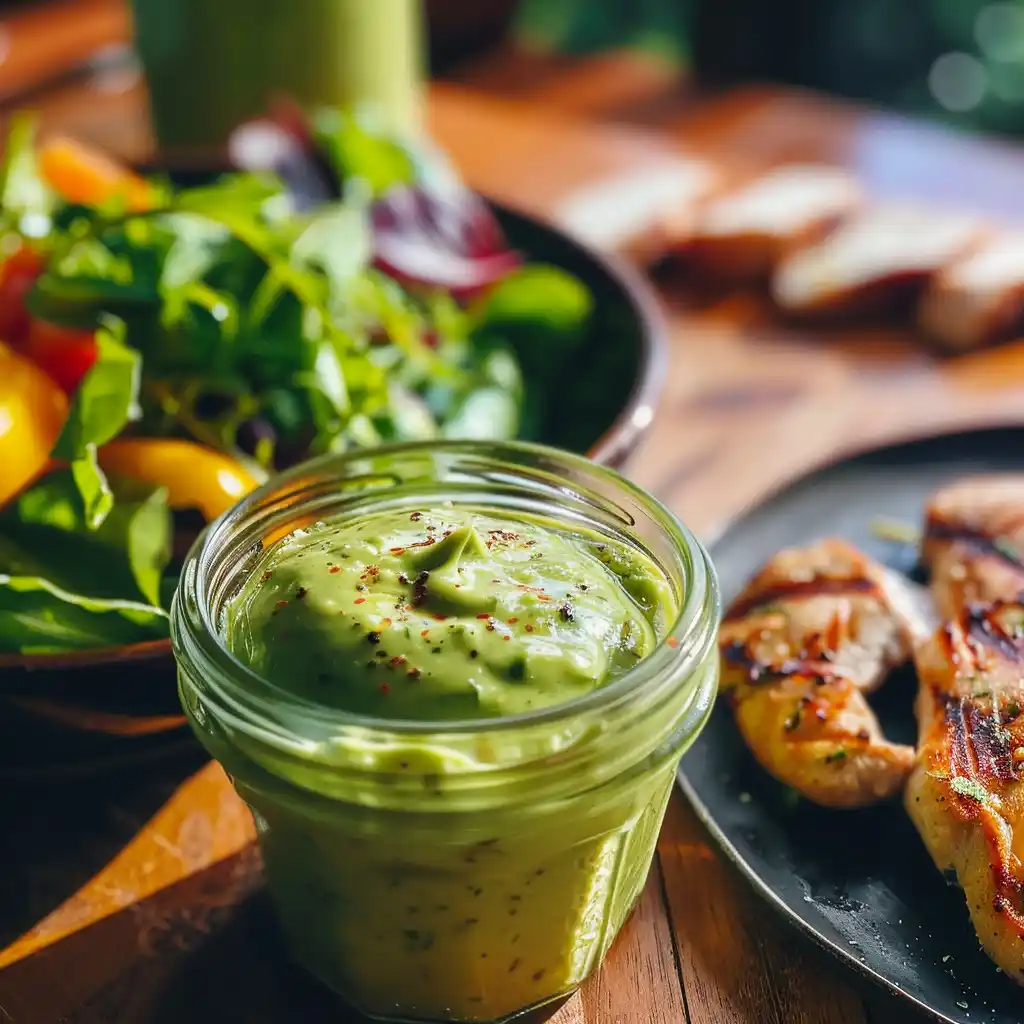
This is one of our family’s staples. It’s rich, vibrant, and works on everything—salads, bowls, and grilled protein. And it supports hormone health thanks to the healthy fats and fresh herbs.
Ingredients:
- 1 ripe avocado
- 1/4 cup filtered water or cucumber juice
- 2 tbsp extra virgin olive oil
- 1 tbsp chopped parsley
- 1 tbsp chopped cilantro
- Pinch of sea salt
- Optional: pinch of garlic powder (only if tolerated)
Instructions:
Blend all ingredients until creamy. Add more water for a thinner texture. Store in a sealed jar in the fridge for up to 3 days.
🥥 Coconut Yogurt & Basil Dressing
Low Histamine | Dairy-Free | Gut-Friendly
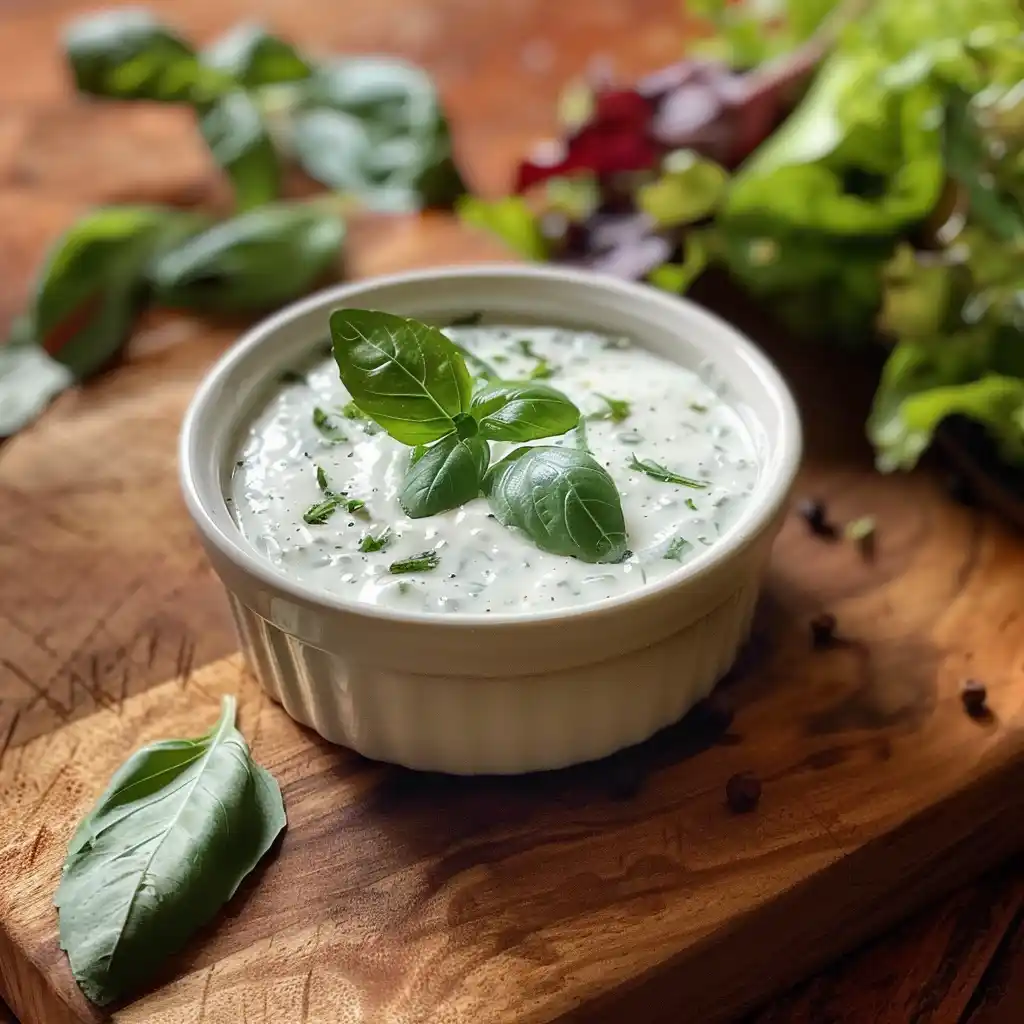
This one’s my go-to when I want something creamy without the dairy bloat. It’s gut-supportive, loaded with anti-inflammatory basil, and blends beautifully with greens.
Ingredients:
- 1/4 cup unsweetened coconut yogurt (plain, no additives)
- 1 tbsp extra virgin olive oil
- 2 tbsp fresh basil leaves
- 1/2 tsp ground flaxseed (for texture)
- 1 tbsp cucumber juice
- Sea salt to taste
Instructions:
Blend or whisk until smooth. Chill for 10 minutes before serving. It thickens slightly in the fridge and makes a great dip, too.
🥒 Zucchini Lemon Balm Dressing
Low Histamine | No Vinegar | Light & Refreshing
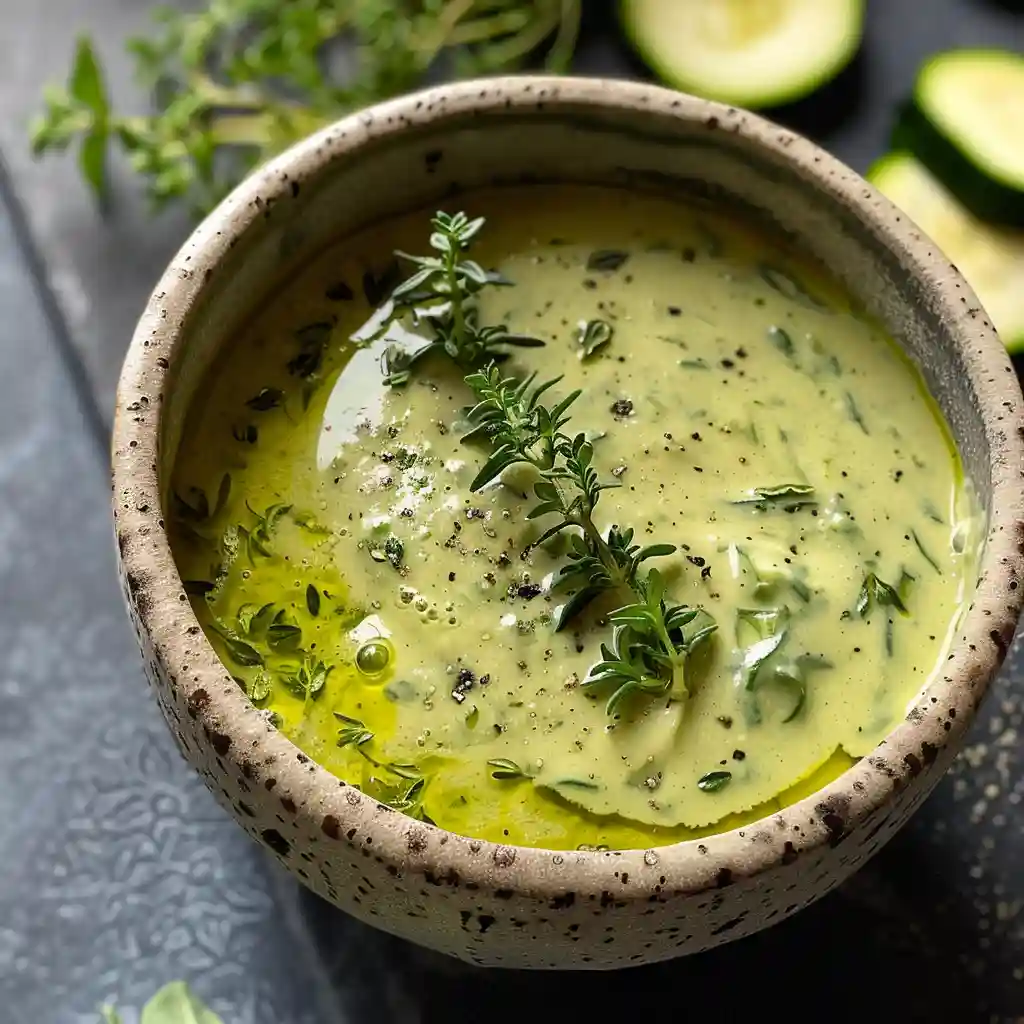
Zucchini gives this dressing a creamy texture without dairy or nuts. Lemon balm tea adds a subtle citrusy lift—without the histamine backlash.
Ingredients:
- 1/2 cup steamed and cooled zucchini
- 2 tbsp cooled lemon balm tea
- 2 tbsp extra virgin olive oil
- 1/4 tsp citric acid powder (optional)
- Sea salt and fresh thyme to taste
Instructions:
Blend until smooth. Drizzle over chopped romaine, kale, or even quinoa bowls.
💡Pro Tip: If you’re looking for a sweet finish to your meal that follows the same low histamine, hormone-safe principles, check out our reader-favorite Low Histamine Desserts That Support Hormone Balance — 7 clean, easy recipes loved by families.
How These Low Histamine Salad Dressings Support Hormone Balance
🥑 Healthy Fats That Stabilize Hormones
Once I stopped focusing only on what to avoid—and started feeding my body what it needed—I saw the power of healthy fats in action. The fats in these low histamine salad dressings (like extra virgin olive oil, avocado, and flaxseed) are rich in omega-3s and monounsaturated fats. These nutrients help:
- Balance estrogen and progesterone
- Support adrenal health and reduce stress-related cortisol surges
- Stabilize blood sugar, reducing cravings and mood swings
By adding these no vinegar, no dairy dressings to my meals, I wasn’t just avoiding flare-ups—I was actively fueling hormone health.
🧠 Gut Health = Better Histamine Breakdown
Did you know your gut plays a huge role in clearing out histamine? A sluggish or inflamed gut slows DAO, the key enzyme that breaks down histamine. For me, that meant:
- Brain fog
- Poor sleep
- Unexplained fatigue
When I replaced vinegar-heavy dressings with gut-friendly ingredients like coconut yogurt, herbs, and blended veggies (zucchini, cucumber), my digestion improved—and so did my energy.
These low histamine salad dressings support gut health and hormone balance naturally.
💪 Clean Ingredients = Stable Blood Sugar
Spiking your blood sugar with sugary dressings or inflammatory oils can set off a cascade of hormonal chaos—especially for insulin, cortisol, and even estrogen.
But with these homemade dressings:
- Flaxseed adds fiber to slow digestion
- Olive oil supports anti-inflammatory pathways
- No refined sugar means no afternoon crash
I’ve noticed more steady energy, better focus, and far fewer cravings—especially when pairing these dressings with high protein meals like this that support hormone resilience.
Tips for Storing and Using Low Histamine Salad Dressings (No Vinegar, No Dairy)
🧊 Storage Best Practices to Keep Histamine Low
Here’s the truth: even the cleanest low histamine salad dressing can become a histamine trigger if you don’t store it properly.
I learned this firsthand when I started making my own no vinegar, no dairy dressings—they were perfect on day one, but by day four, I started noticing old symptoms creeping back. Turns out, histamine builds up as food ages.
To keep things safe and hormone-friendly, I follow these simple rules:
- 🥄 Make small batches (enough for 2–3 days)
- 🧊 Use airtight glass jars to minimize oxidation
- ❄️ Store in the coldest part of the fridge (back shelf, not the door)
- 🗓️ Label with the date so you know when it’s time to toss
- 🚫 Never double dip—use a clean spoon every time
These habits drastically reduced my post-meal symptoms like bloating, skin flare-ups, and fatigue—especially when paired with meals that follow a low histamine, hormone-safe approach like this one.
🗓️ Batch Prep Ideas for Busy Weeks
If you’re juggling work, kids, and a clean eating routine, batch-prepping your dressings will save your sanity.
Here’s how I organize mine each week:
| Day | Dressing | Use It On |
|---|---|---|
| Monday | 🥑 Avocado Herb | Chicken salad wraps or quinoa bowls |
| Tuesday | 🥥 Coconut Basil Yogurt | Mixed greens with grilled turkey or salmon |
| Wednesday | 🥒 Zucchini Lemon Balm | Romaine salad, tuna lettuce cups, or roasted veg |
This 3-day rotation helps me stay on track, avoid inflammation, and keep every meal tasting fresh—without the guesswork.
Mistakes to Avoid When Making Low Histamine Salad Dressings
⚠️ 1. Using “Healthy” But High-Histamine Ingredients
When I first started making low histamine salad dressings, I thought I was doing everything right—until I realized many of my “healthy swaps” were secretly sabotaging my progress.
Here are some common offenders that seem clean, but are actually loaded with histamine or trigger its release:
- Mustard – Almost always contains vinegar and fermentation
- Lemon or lime juice – Citrus is a known histamine liberator
- Balsamic vinegar – Aged and fermented (double histamine hit)
- Nutritional yeast – Highly processed, rich in amines
- Soy sauce or miso – Fermented = inflammation and gut stress
Removing these from my dressings was a turning point. I saw real changes—better digestion, clearer skin, and fewer energy crashes. If you’re on a hormone-healing journey, this swap matters.
⏳ 2. Over-Blending or Storing Too Long
Another rookie mistake? Blending your dressings too long or storing them for more than 2–3 days. I used to make one big jar on Sunday, only to feel bloated and foggy by Thursday.
Histamine builds as food oxidizes or breaks down—especially in liquid dressings.
Here’s the checklist I now follow every time I prep:
✅ Avoid all fermented, aged, or citrus-based ingredients
✅ Store in glass jars, not plastic (for hormone safety too)
✅ Label with the prep date
✅ Toss after 3 days, even if it still smells fine
✅ Use fresh herbs instead of dried (dried herbs may be aged and triggering)
These small shifts made a big difference—not just in taste, but in how I felt after every meal.
📌 Need help pairing these dressings with meals? Try them on bowls, grilled proteins, or alongside recipes from our Low Histamine Desserts That Support Hormone Balance guide. That’s how I keep the whole day inflammation-free—one bite at a time.
How to Customize Low Histamine Salad Dressings for Any Diet
🥗 Make It Work for Your Diet Type—Without the Triggers
When I started using low histamine salad dressings to support hormone balance, I quickly realized something: no single recipe fits everyone. Between me, my wife, and our kids—one’s keto-ish, one’s dairy-free, and another just picky—we had to get creative.
Here’s how I customize our dressings so they fit different diets without compromising on flavor or safety:
🔸 Vegan or Plant-Based?
- Use creamy bases like avocado, coconut yogurt, or even zucchini purée
- Skip anything animal-based (bone broth, gelatin, etc.)
🔸 Paleo or Whole30?
- Go all-in with extra virgin olive oil, fresh herbs, cucumber juice, and citric acid (if tolerated)
- Avoid legumes, dairy, and additives—even “clean” ones
🔸 Low-Carb or Keto?
- Use avocado oil, ground flaxseed, and chia for fat + fiber
- Avoid sweetened yogurts or fruit-based additions
🔸 For Family-Friendly Meals
- Add zucchini, pear juice, or steamed carrot for natural sweetness and a mild, creamy flavor even kids will love
- Serve it in small jars or let kids dip—presentation works wonders
These little tweaks make it easy to prep one base recipe and modify it for everyone in the house. Fewer complaints, fewer ingredients, and way fewer symptoms.
🌿 Boost Flavor Without Histamine Triggers
Let’s be honest—without vinegar or lemon, dressings can fall a little flat at first. But over time, I found low histamine flavor boosters that work just as well:
- 🍏 Fresh green apple or pear juice – gentle acidity and natural sweetness
- 🌱 Dill, basil, mint, cilantro – instantly brighten the mix
- 🧂 Citric acid (just a pinch) – adds tang without using citrus (if tolerated)
- 🥒 Grated cucumber or steamed zucchini – fresh flavor and texture
- 🍵 Lemon balm or hibiscus tea – subtle, tart lift with hormone-supportive benefits
These flavor tricks helped me fall back in love with salads—and even got my kids asking for more dressing (never thought I’d say that).
When to Use Low Histamine Salad Dressings in Your Daily Routine
⏰ Best Times to Add Dressings for Hormone Support
Through trial and error, I’ve learned that when you eat—and how you dress your meals—can make a big difference in hormone balance and histamine tolerance. I use my homemade low histamine salad dressings at specific points in my day to keep my energy up and symptoms down.
Here’s when I reach for them:
- Lunchtime salads or bowls – Healthy fats help prevent afternoon crashes
- Post-workout meals – Support cortisol recovery without sugar spikes
- Dinner with leafy greens – Keeps me full without bloating or messing with sleep
- Meal prep Sundays – I make 2–3 dressings in small jars to use throughout the week
Using dressings rich in anti-inflammatory fats and fresh herbs gives your meals a natural hormonal edge—without any of the usual gut side effects from vinegar or dairy.
🥗 Pairing Dressings With Hormone-Supportive Foods
A good low histamine salad dressing becomes even more powerful when paired with ingredients that also support hormone health. These combos are my weekly go-tos:
| Dressing | Best Food Pairings |
|---|---|
| 🥑 Avocado Herb | Grilled chicken, mixed greens, roasted sweet potato |
| 🥥 Coconut Basil | Quinoa, chickpeas, zucchini noodles |
| 🥒 Zucchini Lemon Balm | Romaine, turkey breast, steamed carrots |
Together, these meals help keep inflammation low, energy high, and hormones stable—what I call the sweet spot for daily balance.
🙋♂️ Frequently Asked Questions About Low Histamine Salad Dressings
🟡 Is balsamic vinaigrette low in histamine?
No. Balsamic vinegar is aged and fermented—two major red flags if you’re following a low histamine diet. Even small amounts can trigger symptoms like headaches, hives, or mood swings. That’s why I completely avoid it in all my low histamine salad dressings.
🟢 What sauces can you eat on a low histamine diet?
The safest options are fresh, homemade, and free from fermented or dairy ingredients. Great bases for low histamine salad dressings include:
- Olive oil + cucumber juice
- Coconut yogurt blended with herbs
- Avocado puree with sea salt
- Tahini thinned with water and cooled lemon balm tea
These sauces not only taste great but also support hormone balance and gut health.
🔴 Does ranch dressing have histamine?
Yes—traditional ranch dressing is typically high in histamine. It contains aged dairy, vinegar, preservatives, and sometimes mustard. Instead, I make a homemade low histamine ranch-style dressing using:
- Coconut yogurt
- Fresh parsley
- Garlic powder (only if tolerated)
- Cucumber juice
It’s creamy, refreshing, and completely hormone-safe.
🟡 What is the lowest histamine vinegar?
Most vinegars—apple cider, balsamic, even rice vinegar—are high in histamine due to fermentation. Some people tolerate distilled white vinegar in small amounts, but I avoid it completely in my low histamine salad dressings.
For that tangy “zing” without the side effects, I use:
- Fresh green apple juice
- Food-grade citric acid
- Brewed and cooled hibiscus or lemon balm tea
These substitutes deliver flavor without triggering symptoms.
Conclusion: A Better Way to Dress Your Salad—and Support Hormone Health
Living with histamine sensitivity doesn’t mean sacrificing flavor—or your hormones.
Switching to low histamine salad dressings that support hormone balance (with no vinegar and no dairy) changed everything for my family. We no longer deal with the bloating, brain fog, or mood swings that used to follow even a “healthy” salad. Instead, we enjoy meals that are satisfying, stabilizing, and totally gut-friendly.
By using ingredients like avocado, coconut yogurt, olive oil, and cucumber juice, you’re not just avoiding triggers—you’re giving your body the tools it needs for balance. These homemade low histamine salad dressings are simple to make, full of flavor, and perfect for anyone managing PMS, cortisol spikes, or digestive discomfort.
✅ Small Swaps, Big Wins
Every time you use one of these low histamine dressings, you’re making a small but powerful shift toward better energy, clearer skin, and hormone harmony.
📲 Let’s Stay Connected
Follow me on Facebook and Pinterest for more low histamine recipes, hormone-friendly tips, and clean eating inspiration—delivered weekly.

